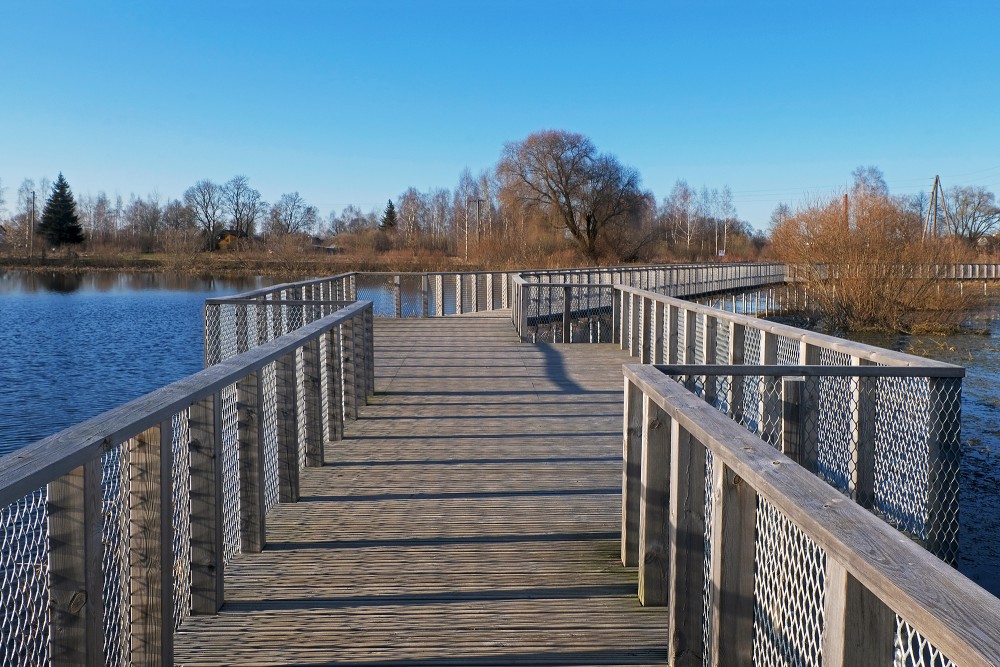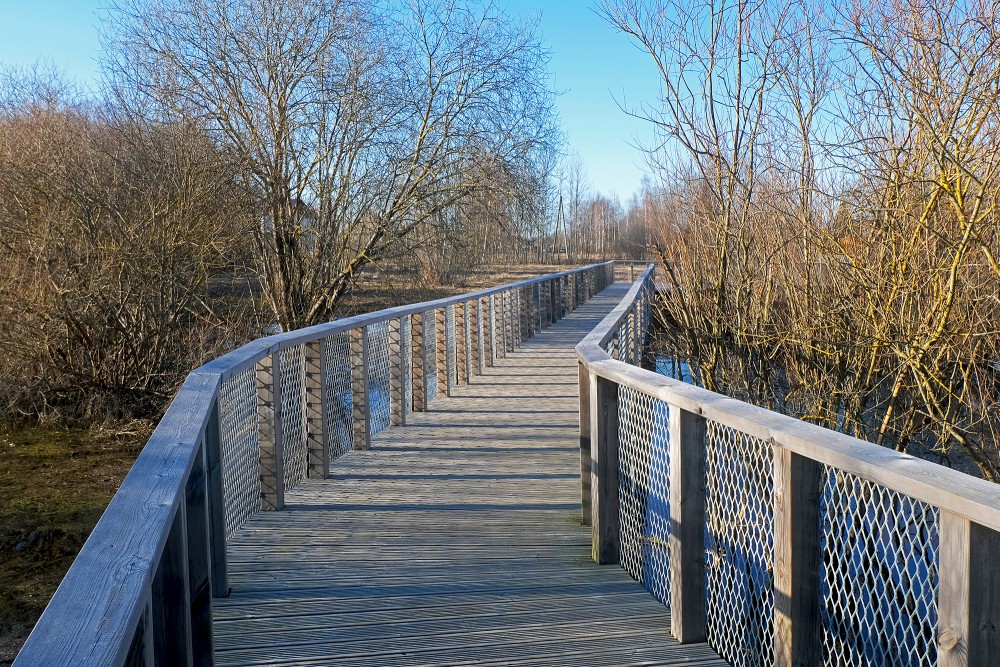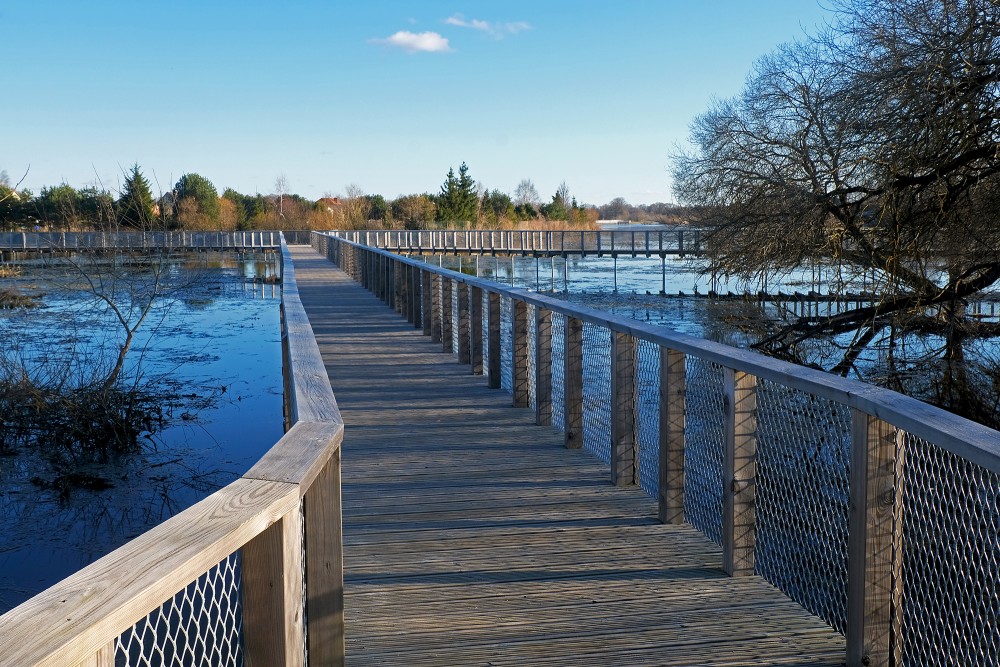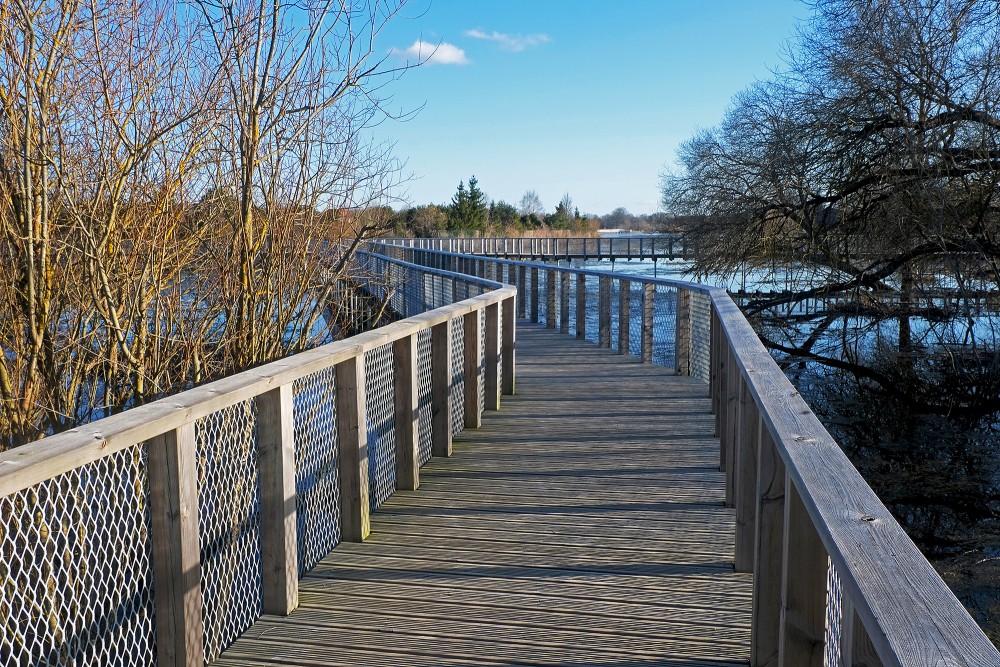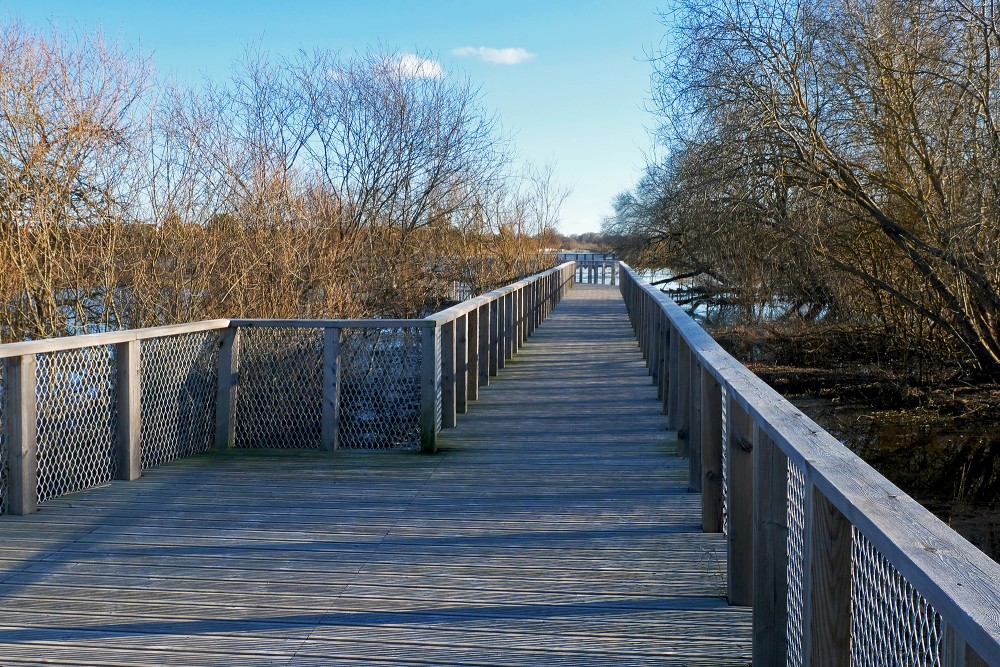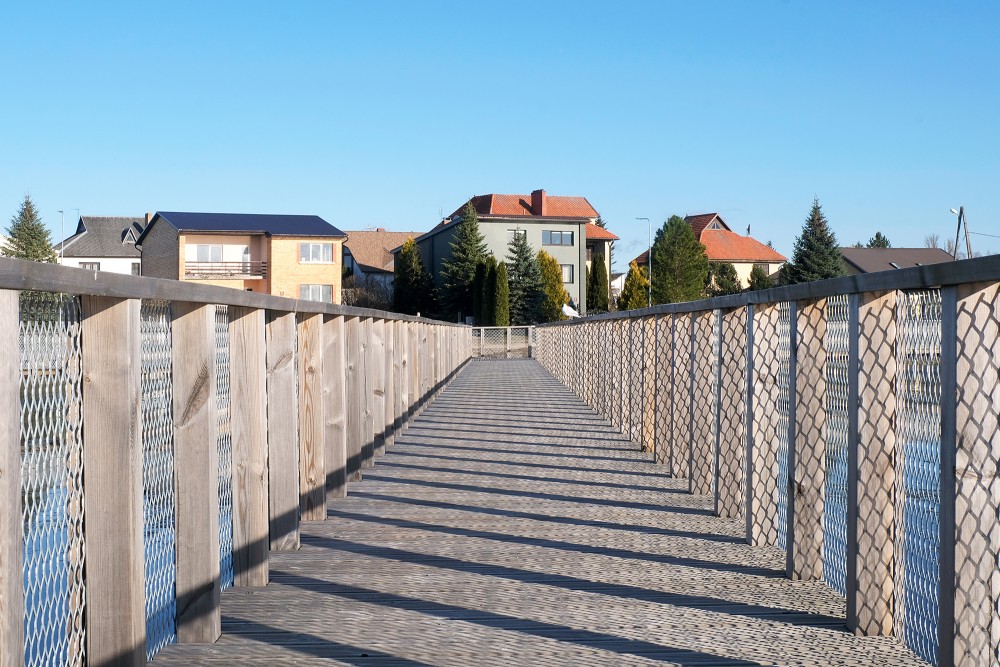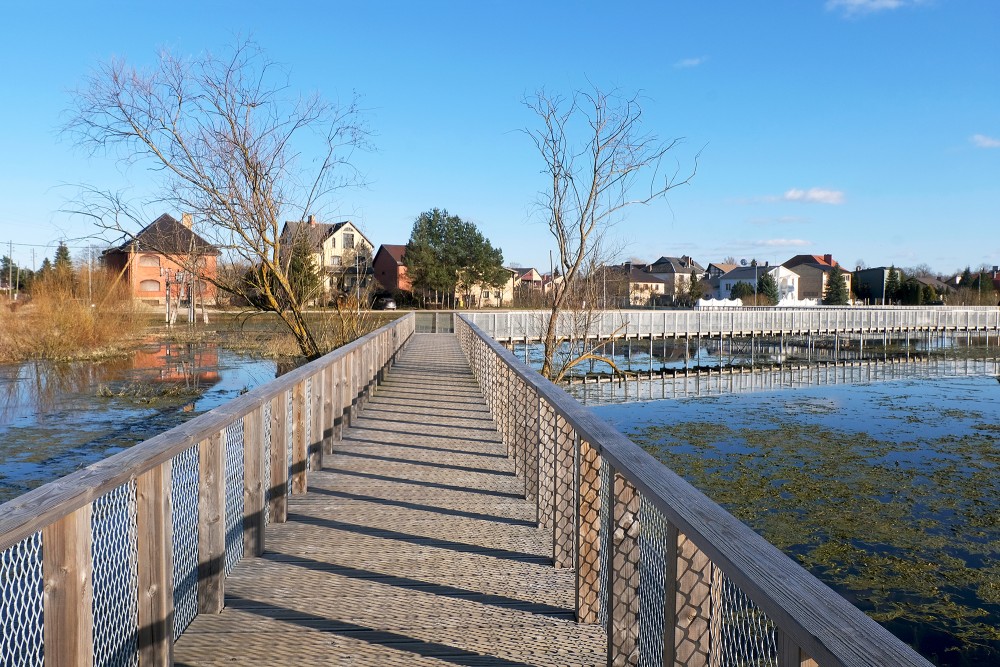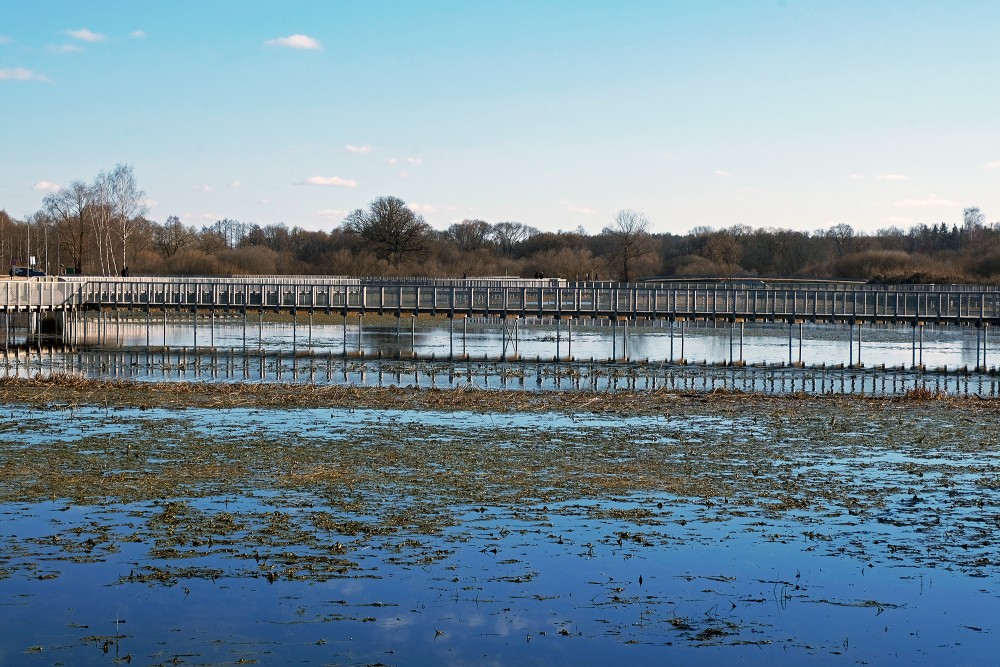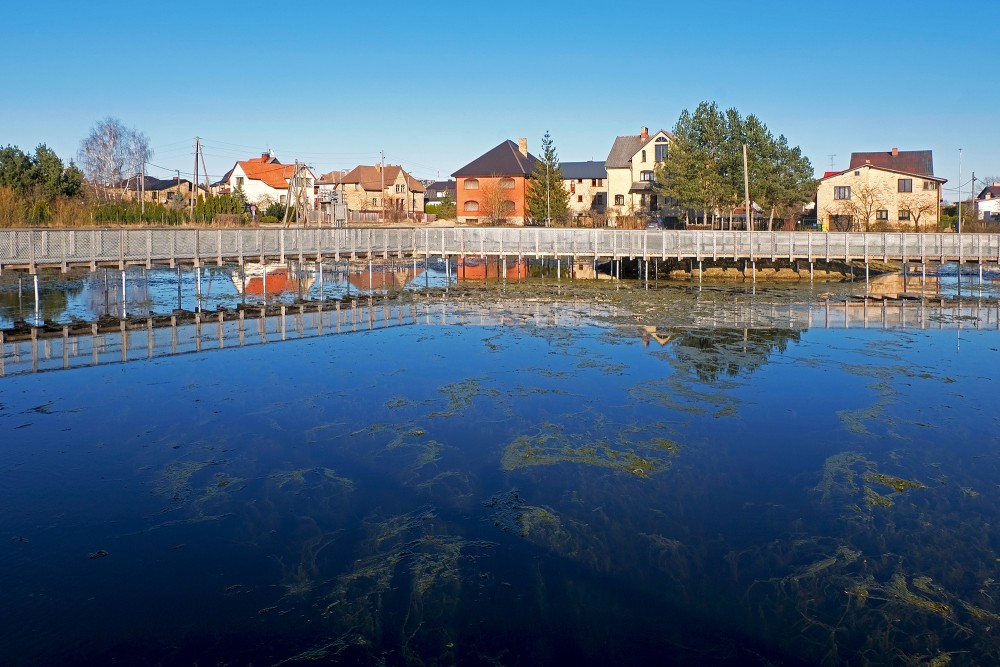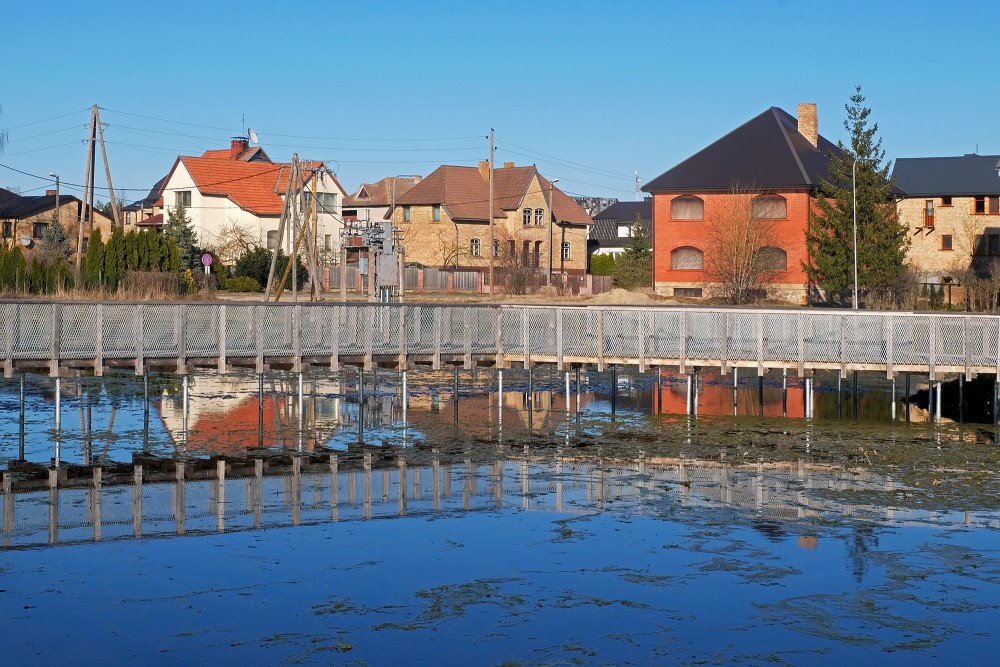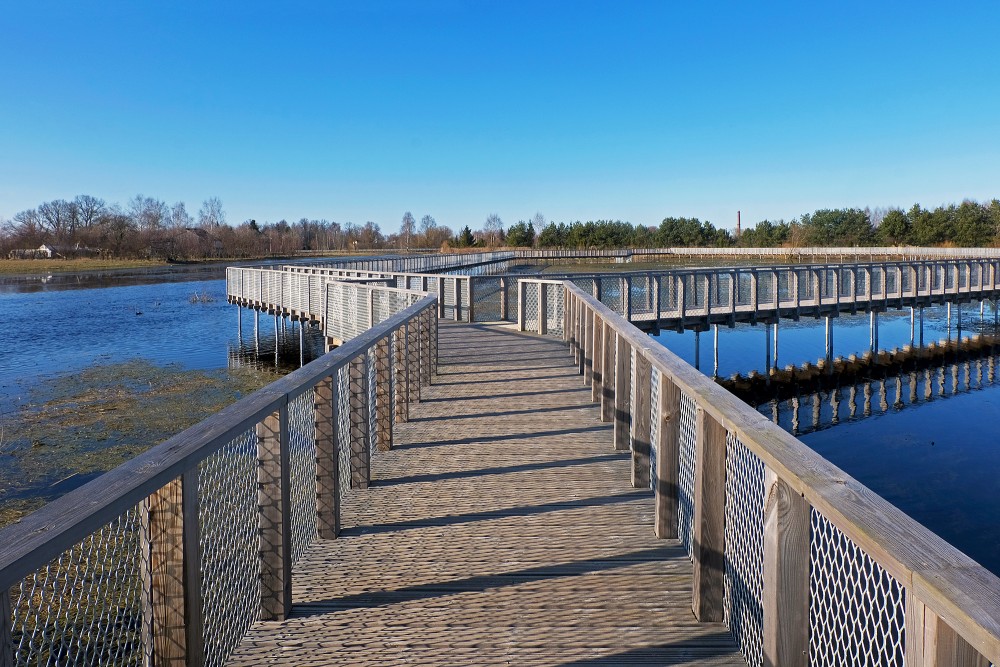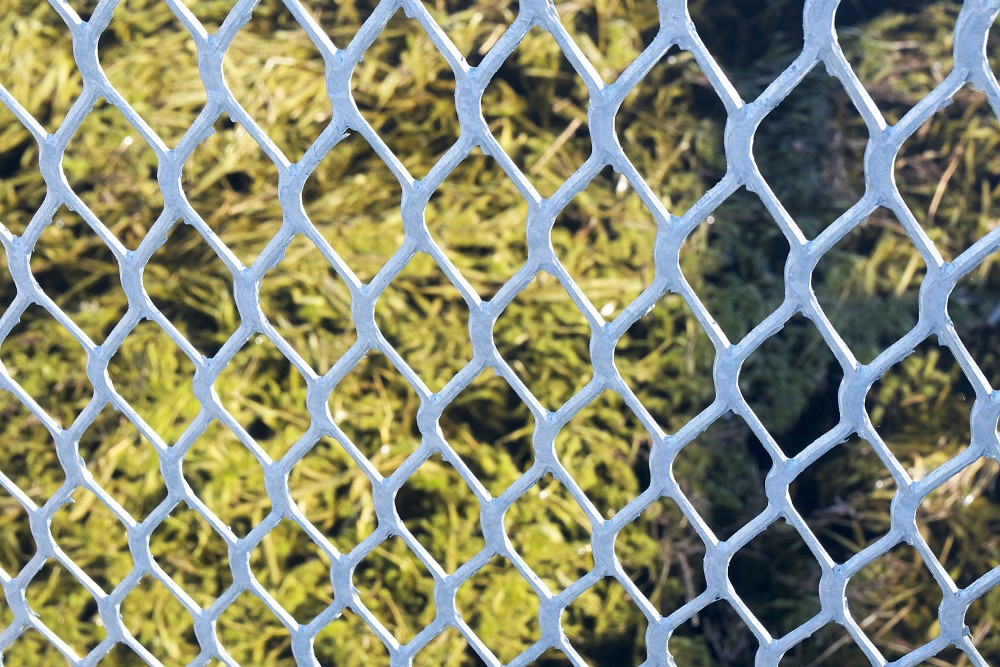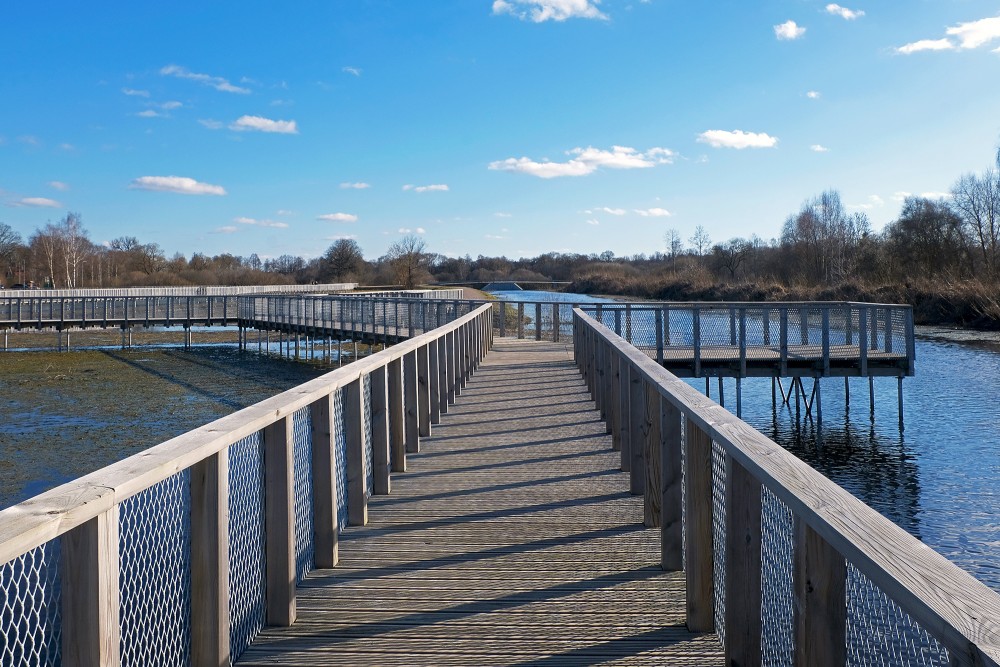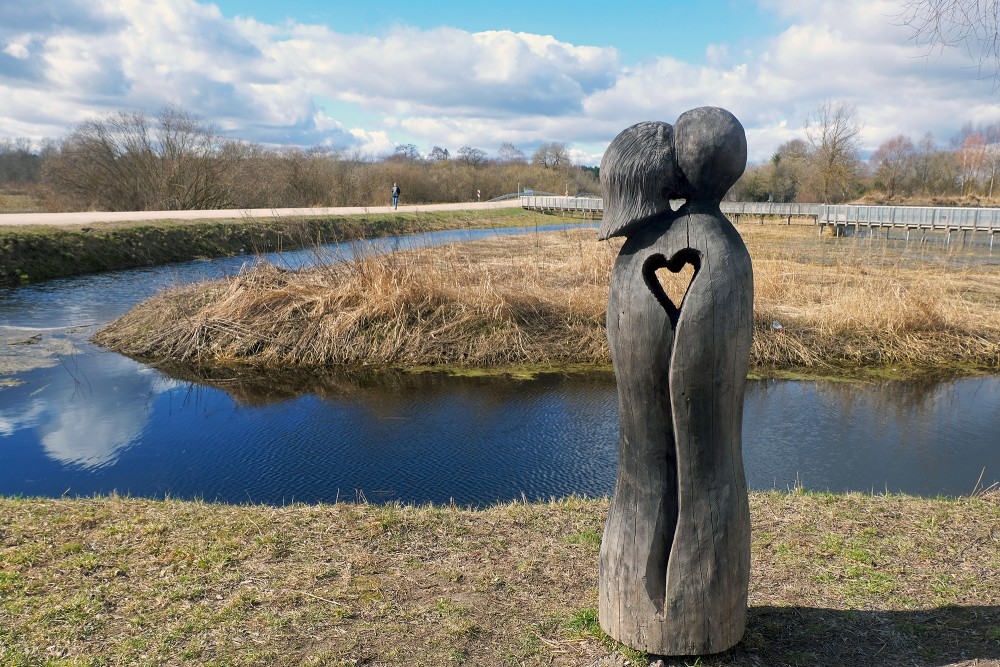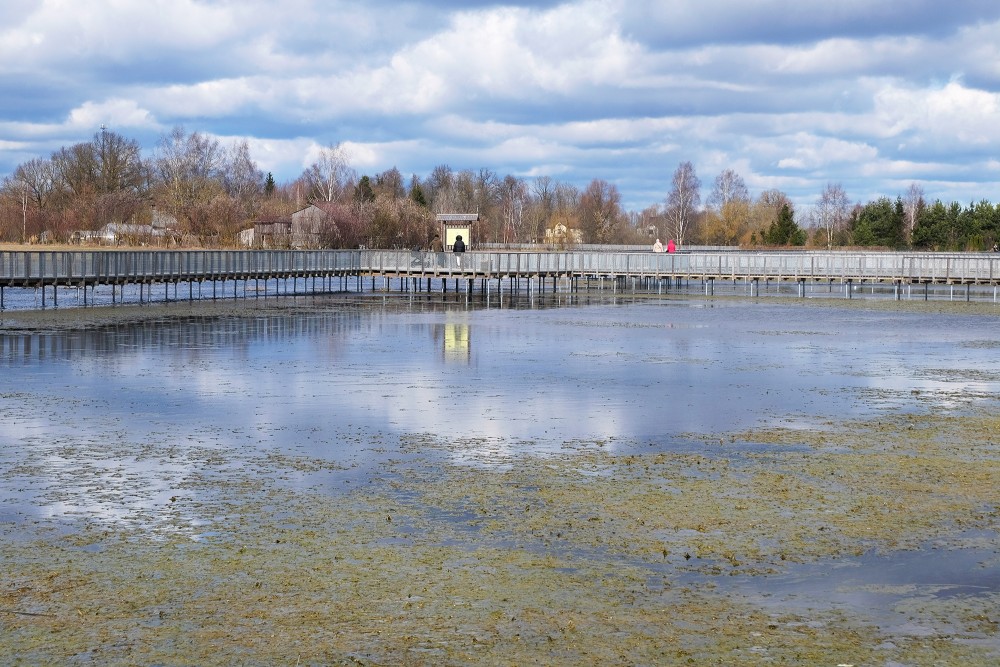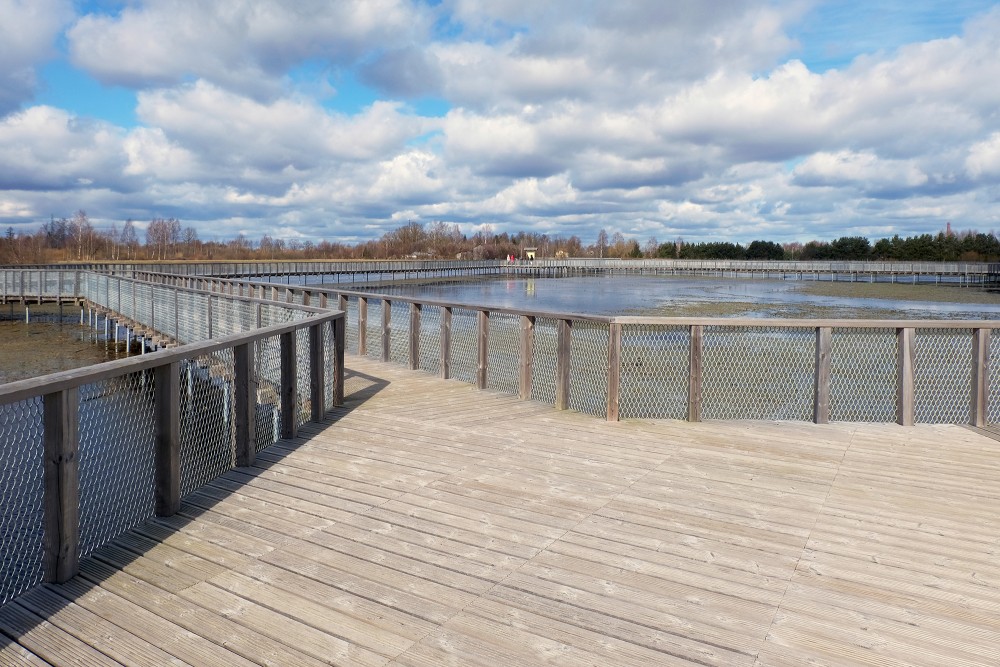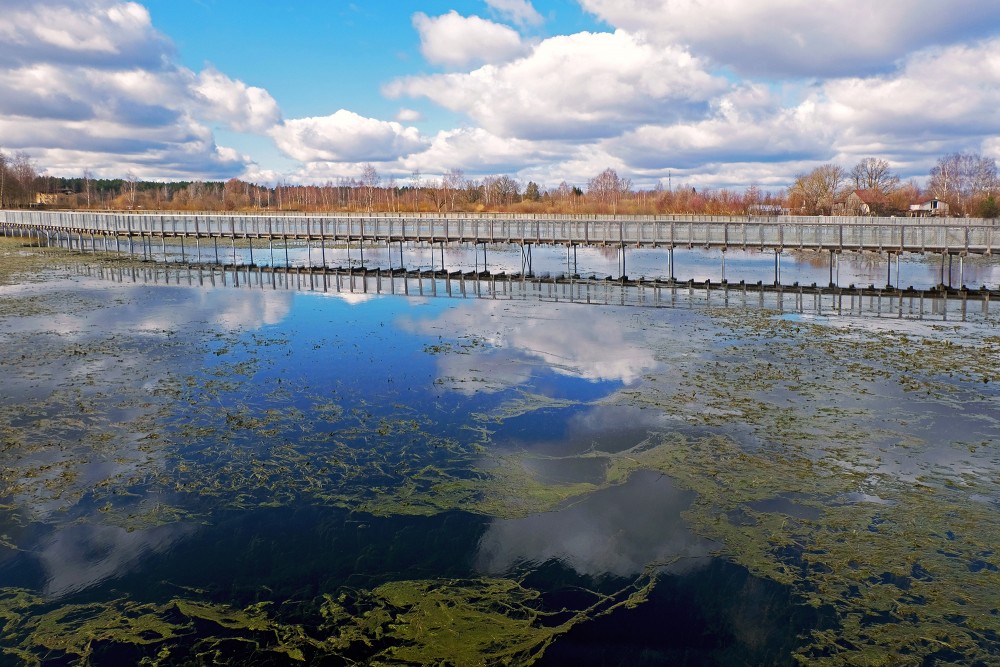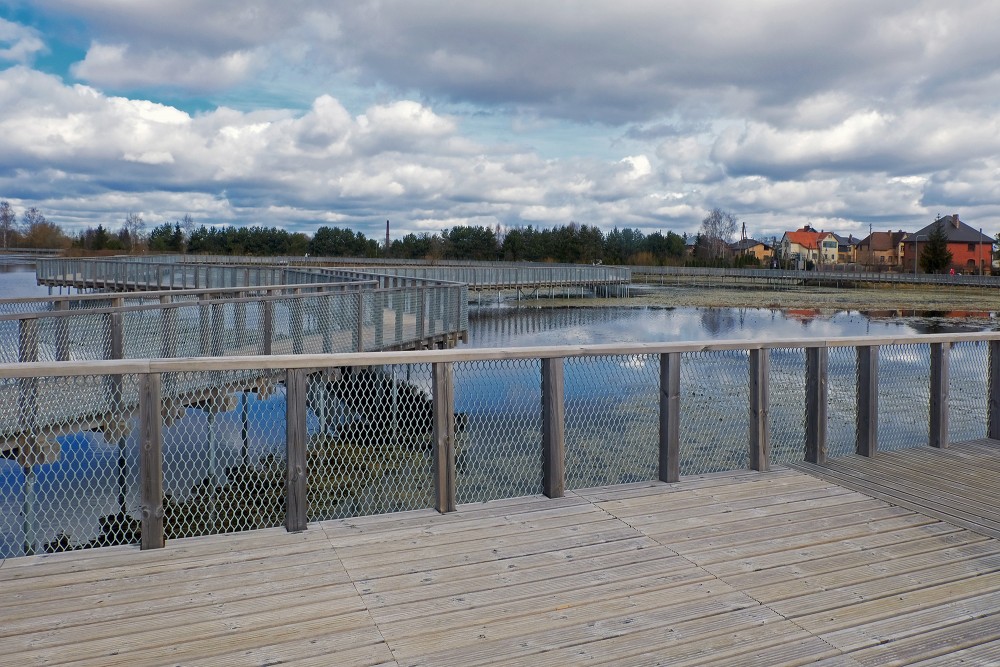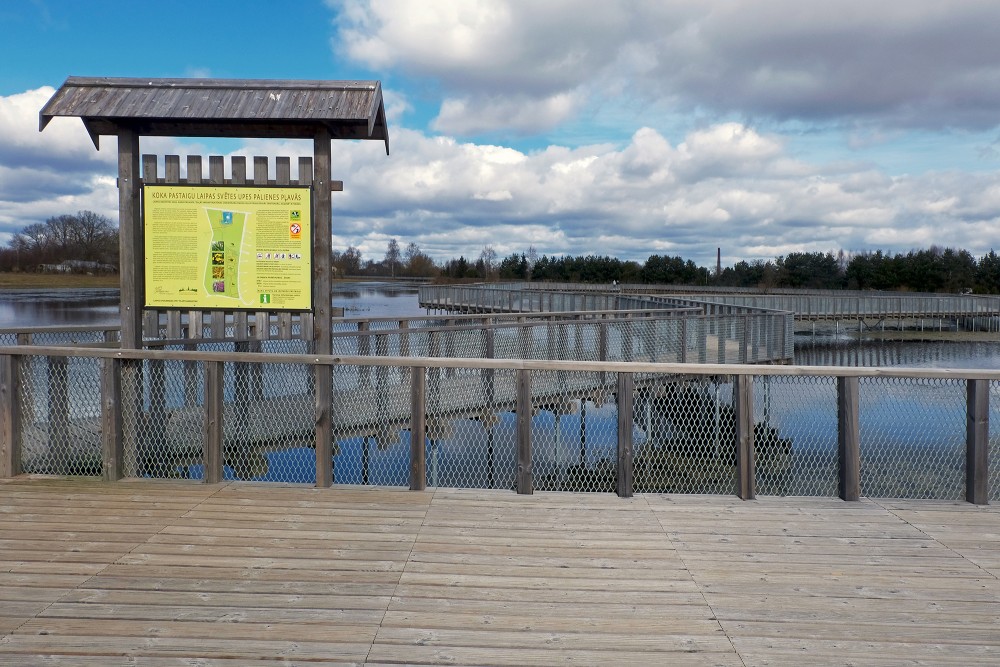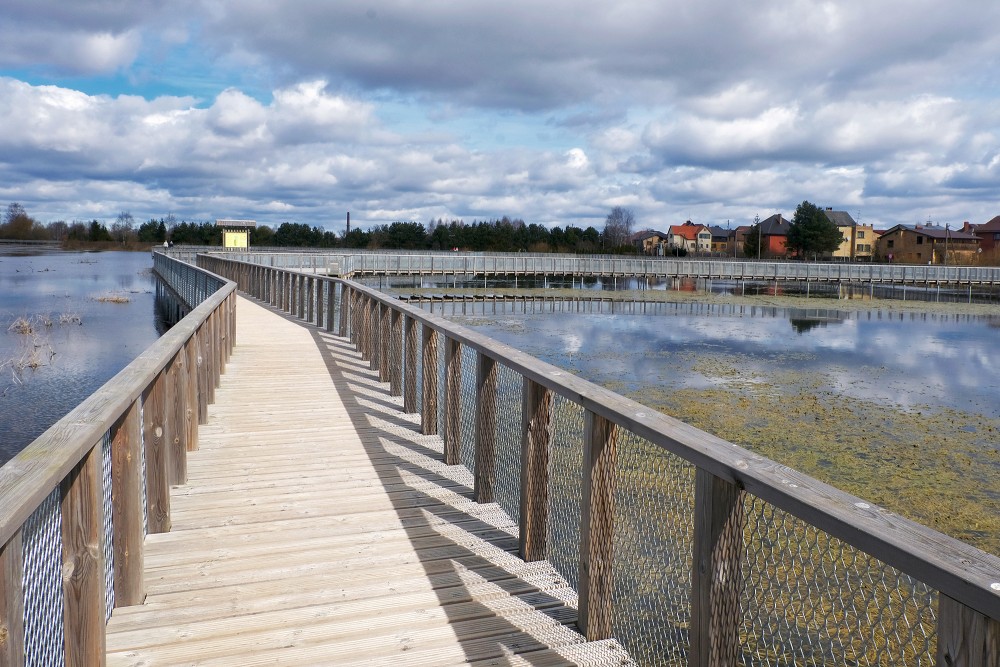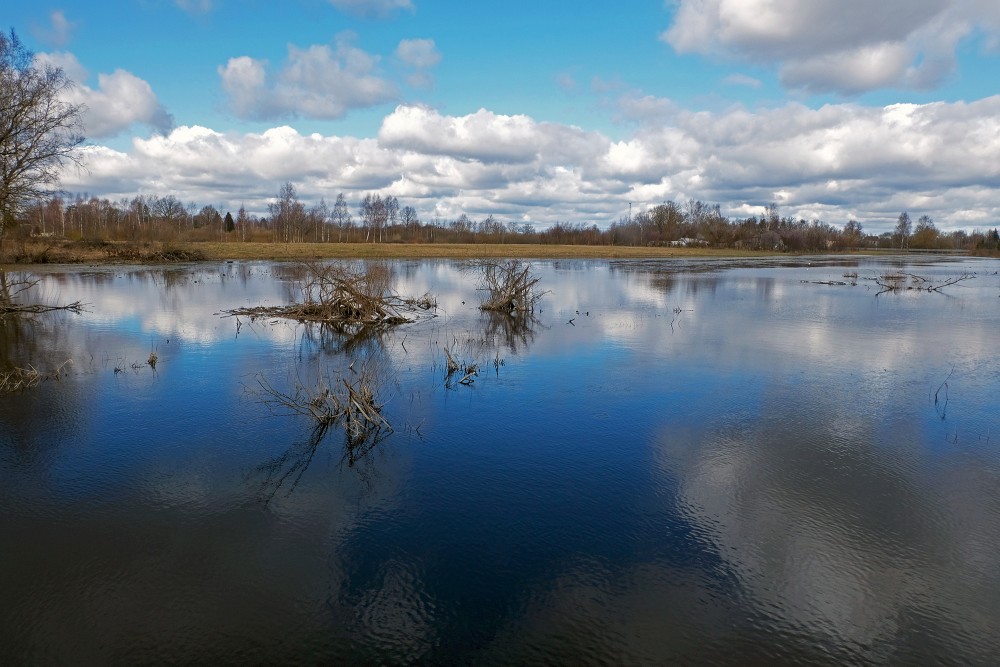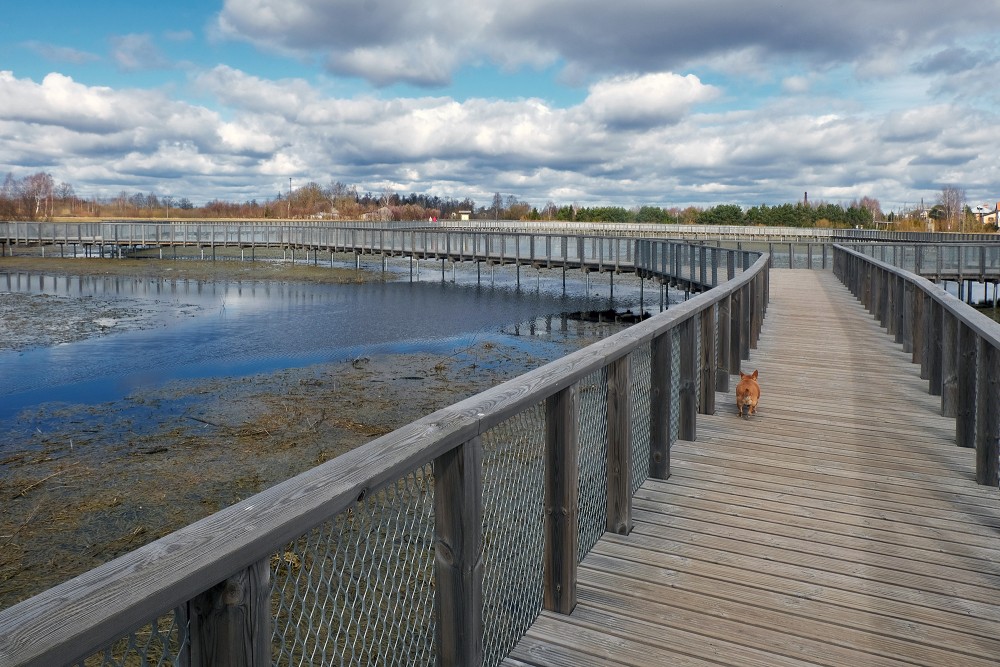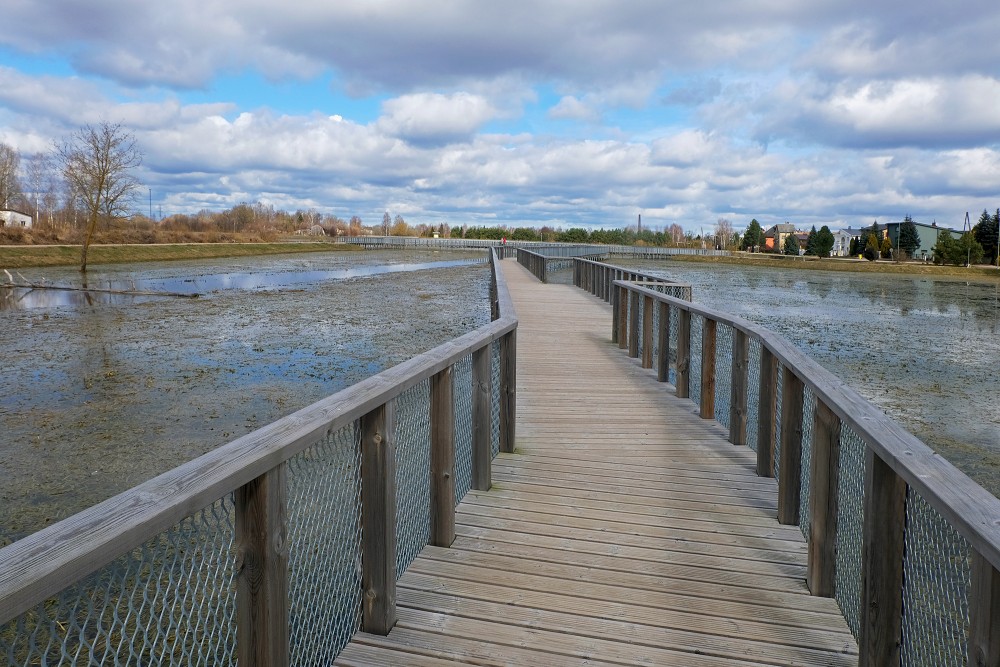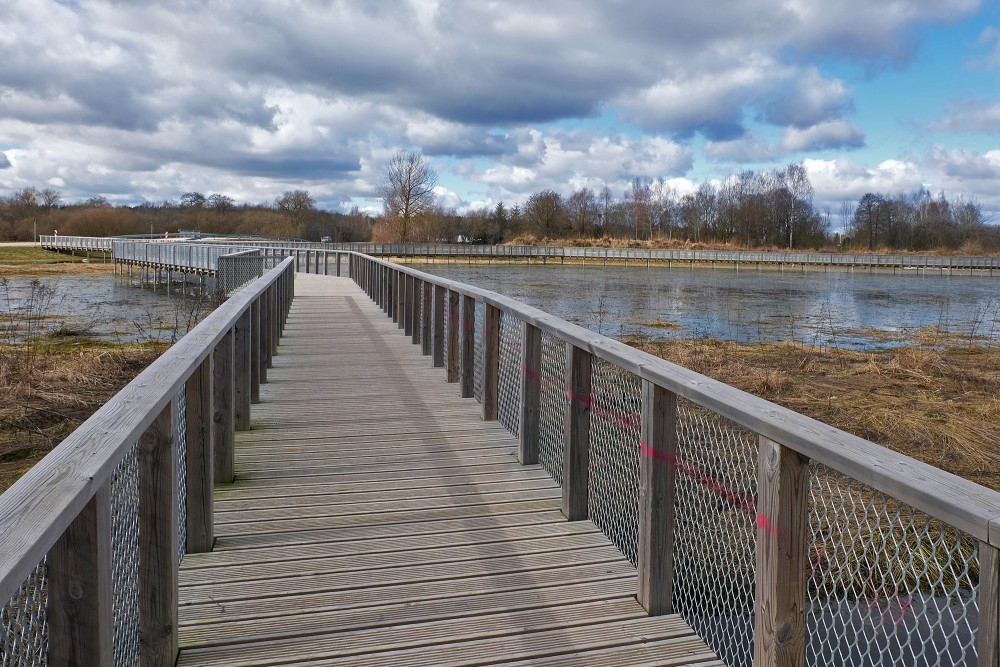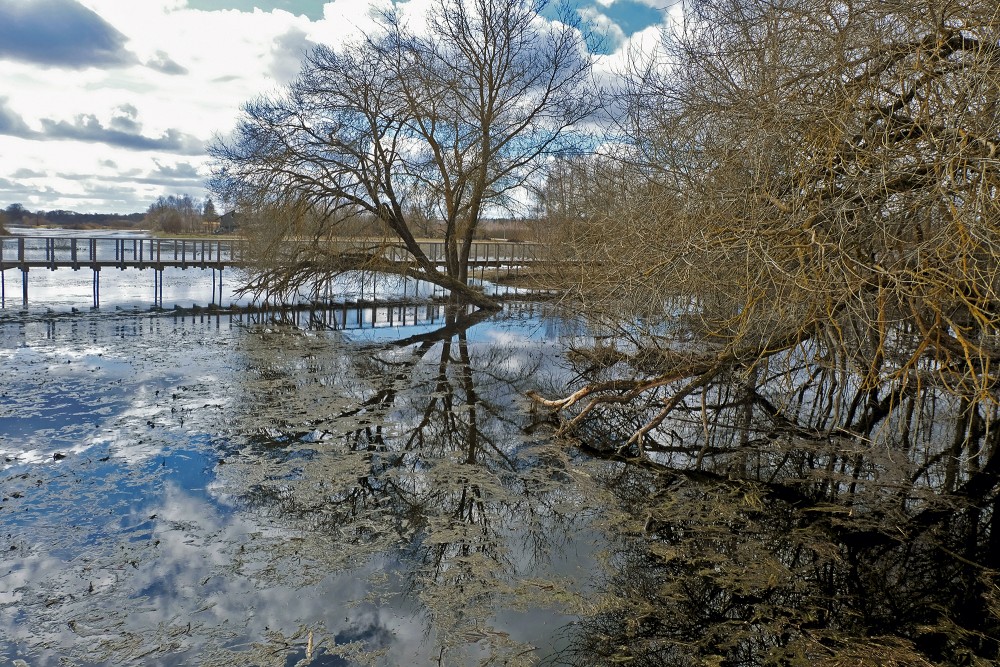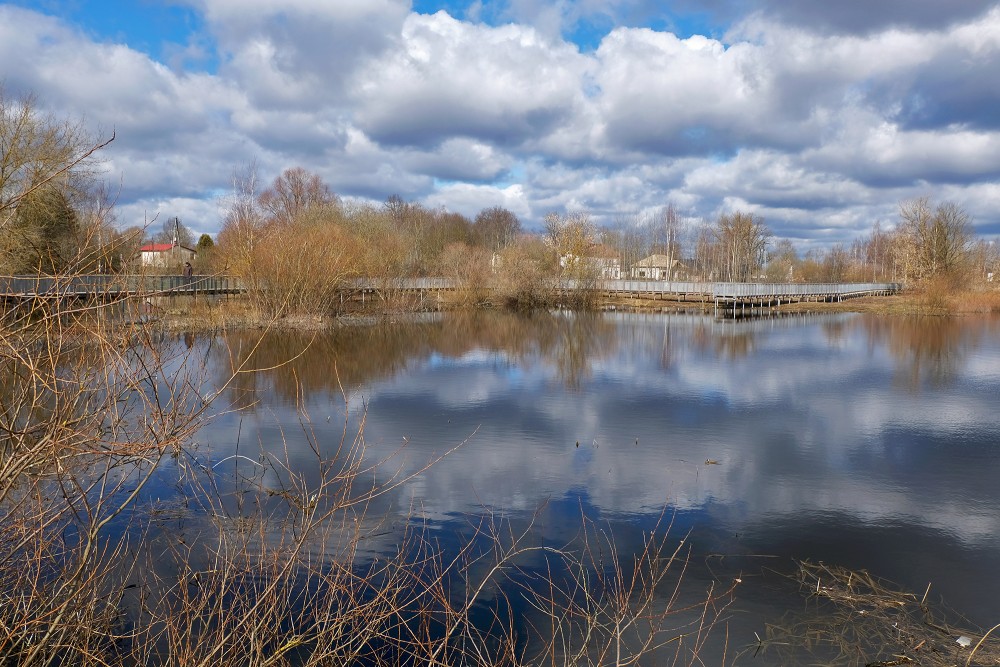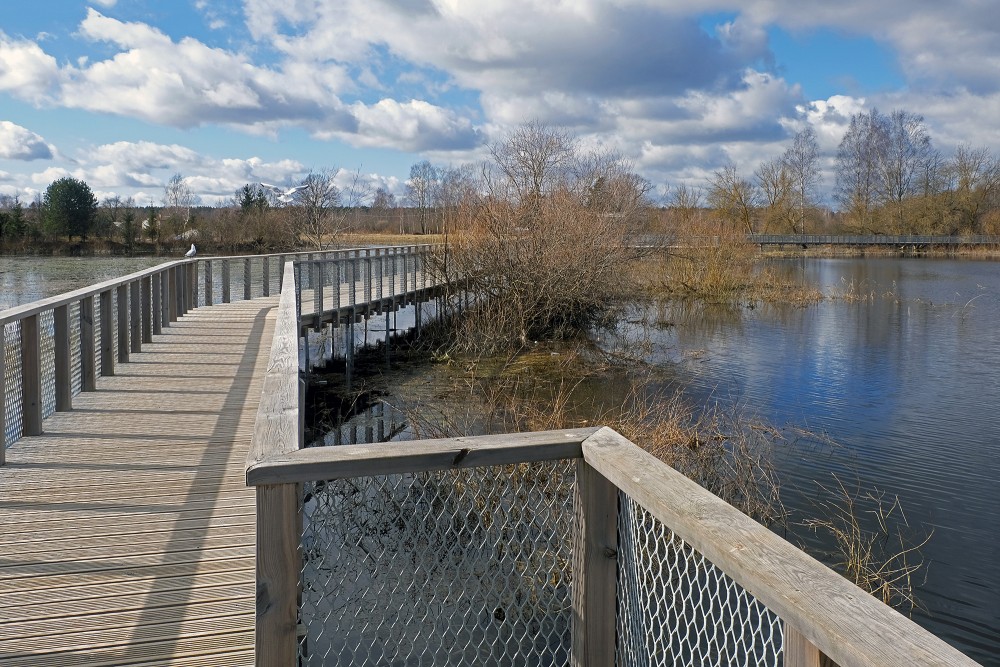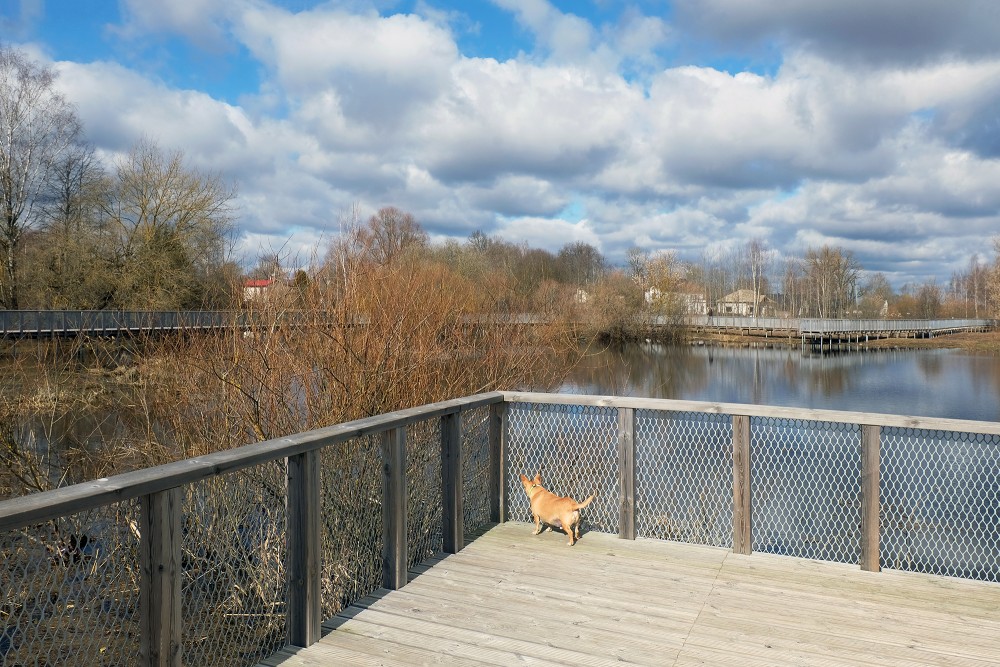Floodplain Meadows
Floodplain meadows are seasonally flooded areas along rivers. Floods occur mostly in springtime, rarer – in other seasons with high precipitation. Floodplains temporary store the excessive waters and gradually release them, thus mitigating the flooding risk downstream. Floodplains ‘catch’ the nutrients dissolved in waters and store them in the rich alluvial soils, thus playing a role of a filter. Nowadays few natural floodplains are left in Latvia. Over the last century vast floodplain areas were modified for agricultural purposes, the small streams where straightened and floodplain meadows were criss-crossed by drainage ditches.
Many plant and animal species have adapted to the seasonality of floodplain and its rich alluvial soils. In floodplain meadows numerous rare plant species can be found, while the shallow waters overrunning the meadows in spring are suitable environment for spawning pikes. Geese and wild ducks rest and feed in the flooded meadows during the long migration journeys. Floodplain meadows are the only nesting habitat of the rare, threatened Great Snipe. Also the threatened Corncrake is nesting in such grasslands, and it is excellent feeding habitat for the rare Lesser Spotted Eagle. Therefore the floodplain meadows are acknowledged as a protected habitat in the entire European Union.
In Latvia, large proportion of the floodplain meadows is included in the category of biologically valuable grasslands. The landowners can receive subsidiary payments for nature friendly management if regularly mowing the grass or grazing animals there.
www.hydroplan.daba.gov
The characteristic features of floodplain meadows are: periodic, but not continuous, flooding with fresh water and salt water. Floodplain meadows have several functions:
1. alleviation of floods – wet meadows can stop the further spread of flood water,
2. ground water replenishment – within the boundaries of the watershed, a wet meadow is able to contain water, thus enabling ground water to flow in again,
3. coastal wet meadows remain nutritious, toxic substances and sediments and prevents their inflow into the water body.
They can be natural, but there are also floodplain meadows that have formed as a result of human activity. There are several types of floodplain meadows: river floodplains, lake floodplains, natural seashore meadows, which were formed temporarily when the natural path of the sea receded, etc. For example, along the coast of the Baltic Sea, you can find floodplain meadows that were formed when the sea receded. Almost all wetlands are protected habitats, as many species grow there that are protected or at risk of extinction.
www.arhivs.liepaja.lv
